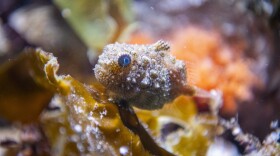Seattle scientists have managed to genetically transform human cells in the lab from HIV targets to HIV killers, and the technique could have implications for cancer and other diseases.
The virus that causes AIDS loves to go after a particular group of white blood cells called T-cells, a key part of the immune system. T-cells have a protein on their surface that the virus attaches to and uses to invade the cell.
A team co-led by David Rawlings, a physician and professor of pediatrics at the University of Washington and the Seattle Children’s Research Institute, used an enzyme that works like “molecular scissors” to snip out a key gene. Removing that gene causes the T-cells to stop making the receptor protein, making them less vulnerable to the virus.
Then the researchers say they used a non-infectious virus as a vehicle to insert a new gene into the gap. The transformed T-cells then become HIV hunters, going after infected cells. Rawlings says some of these techniques have been tried before, but never with this level of precision and efficiency.
“The efficiency has been very low, probably in the 1 to 2 percent range. The approach we used is much more efficient. We’ve introduced these genes into about 60 percent of the T-cells,” Rawlings said.
Researchers say the technique could have other applications too, such as training T-cells to go after tumors. Some of the mechanisms have been tested in humans, such as the disruption the T-cells’ HIV receptors.
But the human trials have not yet examined the one-two punch of deleting that gene and replacing it with the HIV-targeting gene. So far that combination has only been demonstrated in mice and in tissue samples, with additional animal and human research still needed.
Hans-Peter Kiem, who uses similar techniques at the Fred Hutchinson Cancer Research Center but wasn’t involved in the study, called it “quite a significant advance in the field.”
Kiem says he’s excited about some of the broader implications, including the possibility of fighting cancer and other conditions.
“That really opens up the field for gene editing for genetic diseases as well,” he said. “I think it’s very exciting.”







